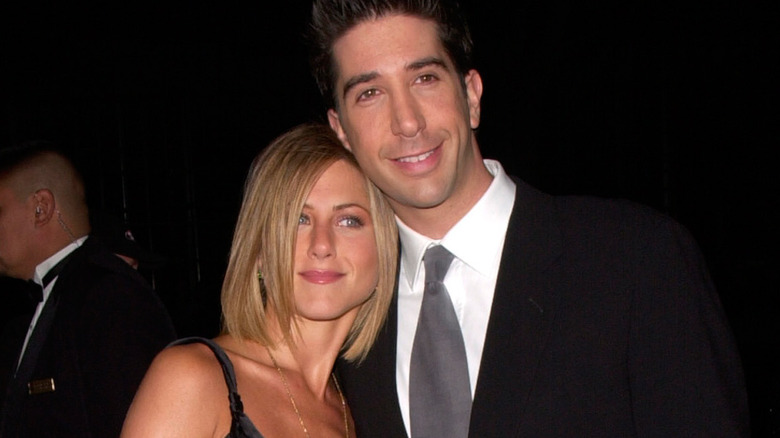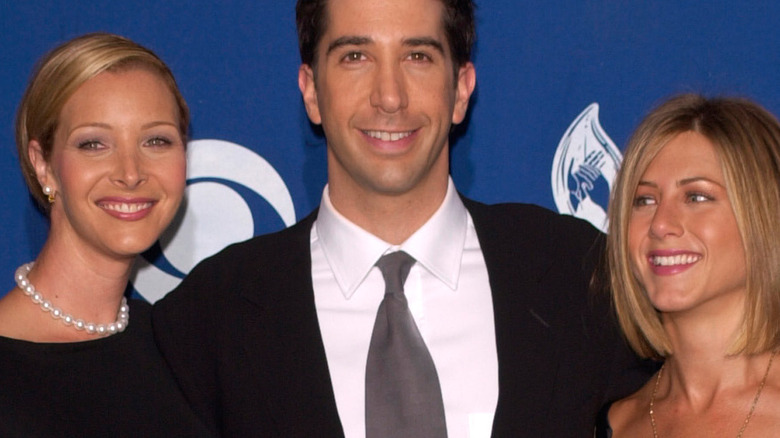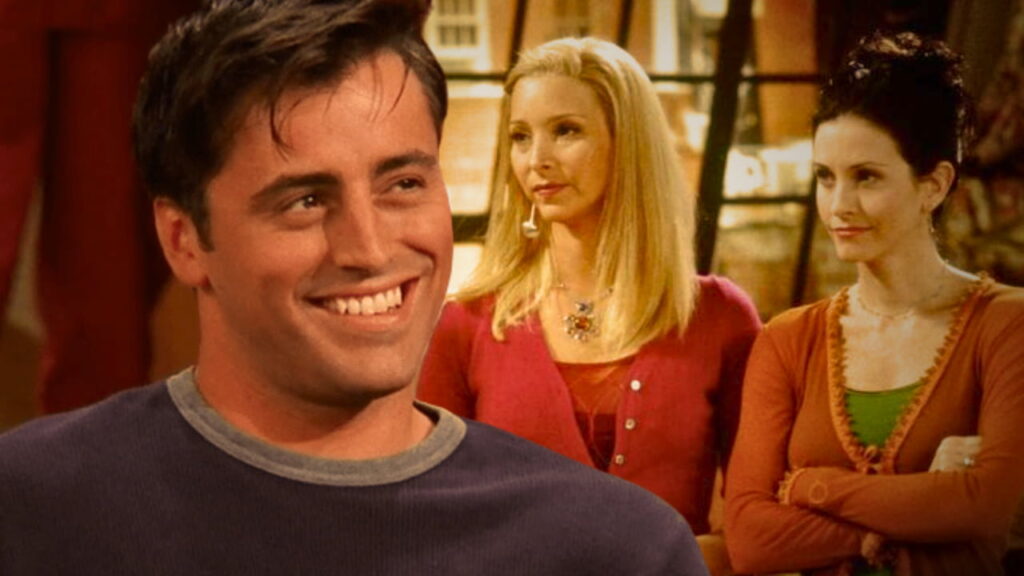Who Were The Highest Paid Actors In Friends? Unpacking The Iconic Cast's Earnings
Detail Author:
- Name : Jordi Pfeffer
- Username : brandi31
- Email : hoeger.arianna@gmail.com
- Birthdate : 2005-09-02
- Address : 68525 Hoppe Pass Apt. 183 Bartholomemouth, HI 41774-6954
- Phone : 1-920-313-9944
- Company : Daniel, Bartoletti and Raynor
- Job : Home Appliance Installer
- Bio : Maiores assumenda omnis et ea cumque cum totam. Facere vel omnis rerum sit sit fugit distinctio. Et perspiciatis ullam velit provident ad nobis qui id.
Socials
linkedin:
- url : https://linkedin.com/in/bartholomereichert
- username : bartholomereichert
- bio : Doloribus aut nihil ex velit excepturi culpa.
- followers : 5566
- following : 1437
twitter:
- url : https://twitter.com/reichertb
- username : reichertb
- bio : A ipsam eum impedit corporis et laborum. Rerum natus ducimus sint commodi. Voluptatem hic nisi eius perspiciatis et ipsum. Velit enim cum iure quis.
- followers : 4357
- following : 724
tiktok:
- url : https://tiktok.com/@reichert2003
- username : reichert2003
- bio : Eum natus architecto facilis non accusantium.
- followers : 3351
- following : 635
instagram:
- url : https://instagram.com/bartholome_reichert
- username : bartholome_reichert
- bio : Hic et eaque nihil labore. Numquam aut consequatur ipsa ipsam laborum aut autem.
- followers : 1135
- following : 1815
Few television shows have captured hearts quite like Friends, a series that, in a way, truly defined a generation. For ten remarkable seasons, millions tuned in to follow the lives of six young adults living in New York City, sharing laughs, tears, and a whole lot of coffee at Central Perk. The show's enduring popularity, even decades later, is something quite special, and it keeps fans curious about all sorts of behind-the-scenes details, especially about the people who brought those beloved characters to life.
One question that frequently pops up, and it's a very good one, is about the money. People often wonder just how much the cast members were earning as the show became a global phenomenon. It’s a fascinating look at the business side of Hollywood, and how a group of actors, quite famously, managed to secure some truly remarkable deals.
This article will explore the financial journey of the Friends cast, detailing how their paychecks grew from modest beginnings to staggering sums. We will look at the collective bargaining that changed the game for them, and how their unity, in some respects, truly set a precedent for others in the entertainment world. So, let’s get into the reported figures and the story behind them.
Table of Contents
- The Early Days: Modest Beginnings
- A United Front: The Power of Six
- Beyond the Episodes: Residuals and Reruns
- Individual Earnings: Who Earned What?
- Frequently Asked Questions
The Early Days: Modest Beginnings
When Friends first premiered in 1994, the six main actors – Jennifer Aniston, Courteney Cox, Lisa Kudrow, Matt LeBlanc, Matthew Perry, and David Schwimmer – were, for the most part, relatively unknown faces. They were, in fact, just starting out on what would become a truly massive hit. Like many new shows, the initial salaries for the cast members were, well, pretty standard for the time. For that first season, it’s widely reported that each actor was taking home around $22,500 per episode. This figure, you know, was a decent starting point, but it was nowhere near the sums they would eventually command.
As the show gained traction, becoming a surprise hit, the network and studio quickly realized they had a goldmine on their hands. The audience grew steadily, and the characters became household names. It was clear that these actors were becoming indispensable, which, as a matter of fact, gave them some serious leverage for future talks. Their contracts, typically, were for several seasons, but as those initial agreements came up for renewal, the actors, quite naturally, started to think about their true value.
By the second season, the show’s popularity was undeniable. The cast members, in a way, saw their paychecks increase slightly, but there was still a noticeable difference among them. Some actors, it seemed, were earning a bit more than others, a common practice in Hollywood where initial offers can vary based on prior experience or perceived star power. This slight disparity, however, would soon become a very important talking point for the group, leading to a decision that would change everything for them.
A United Front: The Power of Six
The real turning point in the Friends cast’s earnings story came during negotiations for the third season. It was at this time that the six actors, quite remarkably, decided to stick together. Instead of negotiating individually, which is usually how these things go, they opted to bargain as a single unit. This was, in fact, a pretty bold move, especially for a cast of that size. They understood, you know, that their collective strength was far greater than any one person’s.
The Iconic Negotiation
Their strategy was simple yet incredibly effective: if one person didn't get what they wanted, no one would sign. This meant that the network, Warner Bros. Television, faced a united front, and they couldn't just pick off one actor against another. This approach, in some respects, was almost unheard of for a cast of this size. It was a very powerful display of solidarity, and it paid off handsomely. The actors, you see, were essentially saying, "we are all equally important to the success of this show."
This collective bargaining resulted in a significant pay bump for everyone. For seasons three and four, each cast member reportedly earned around $75,000 per episode. This was a massive jump from their initial earnings, and it truly cemented their status as a high-value ensemble. It showed that the minutes of their meetings, where these decisions were made, were indeed presented and discussed with great care, much like how the subject 'minutes' is plural and takes a plural verb 'were'. They were, in a way, fortunate enough to escape injury when their car crashed, meaning they were fortunate because they were a united front, not just because they were lucky.
The unity continued through subsequent contract renewals. By season five, their pay reportedly jumped again to $100,000 per episode. Then, for seasons seven and eight, it reached an astonishing $750,000 per episode. This steady increase, you know, was a direct result of their continued solidarity and the show's unyielding popularity. It’s almost as if they were saying, “as if it were a rule, we all get paid the same.”
Reaching for the Stars: Season 7-8
The period covering seasons seven and eight truly saw the cast reaching new financial heights. With the show consistently ranking as one of the most-watched programs on television, their bargaining position was incredibly strong. The network, quite frankly, had little choice but to meet their demands if they wanted to keep the show going. This meant each of the six actors was earning an impressive $750,000 for every single episode they filmed. That's a lot of money, you know, for just 22 or 24 episodes a year.
This kind of salary was, in fact, almost unprecedented for a television ensemble. It reflected not only the show's massive ratings but also the perceived value of each individual actor to the overall chemistry and success of Friends. They were, in some respects, setting a new standard for what TV stars could earn. It really was a testament to their collective power, and how they managed to maintain that unity over several years of negotiations.
The Grand Finale: Season 9-10
For the final two seasons, nine and ten, the Friends cast achieved what many consider to be the pinnacle of television salaries. Each actor reportedly commanded an incredible $1 million per episode. This made them, arguably, the highest-paid television actors of their time. It was a truly astounding figure, and it sent ripples throughout the industry. This level of pay, you know, was a clear sign of just how valuable the show, and its stars, were to NBC.
The decision to pay them such a sum was, in fact, a strategic one for the network. They knew that ending Friends would leave a massive hole in their prime-time lineup. By agreeing to the $1 million per episode, they ensured that the show could run for two more seasons, giving them time to develop new programming and, you know, slowly transition their audience. It was a big gamble for the network, but one they felt was necessary to keep the ratings high and maintain their dominance.
So, when people ask, "Who were the highest paid actors in Friends?", the answer is, in a way, all of them. By the end, they were all earning the same, very high amount. This collective success story is, you know, pretty unique in Hollywood history, where individual stars often try to out-earn each other. Their unity was, truly, their greatest strength.
Beyond the Episodes: Residuals and Reruns
The money the Friends cast earned per episode was, of course, a huge part of their wealth, but it's far from the whole story. A significant portion of their long-term earnings comes from something called residuals. These are payments actors receive every time an episode of their show is re-aired, streamed, or sold in syndication. For a show as globally popular and endlessly re-run as Friends, these residuals add up to, you know, a truly staggering amount over the years.
It's reported that the main cast members negotiated a deal for 2% of the show's syndication revenue. Given that Friends brings in billions of dollars in reruns and streaming deals for Warner Bros., that 2% translates to tens of millions of dollars annually for each actor. This means that, even today, years after the show wrapped up, the cast members are still earning a very substantial income from it. This is, in fact, a pretty sweet deal, and it’s a big reason why they are so wealthy.
This long-term income stream is, arguably, just as important as their per-episode paychecks. It’s the gift that keeps on giving, so to speak. The show’s presence on streaming platforms like Max means new generations are constantly discovering it, ensuring that those residual checks keep coming in. It’s a powerful example of how intellectual property, you know, can generate wealth for decades. You can learn more about the economics of television production on our site, which helps explain how these deals come together.
Individual Earnings: Who Earned What?
As we’ve discussed, the defining characteristic of the Friends cast’s earnings was their collective approach to negotiations. This meant that, for the vast majority of the show’s run, particularly from season three onwards, all six main actors were earning the exact same amount per episode. So, when you ask who were the highest paid actors, the answer is, quite simply, all of them equally, at least for the latter, very high-paying seasons.
Before their collective bargaining, there were, reportedly, slight differences in their initial salaries. Jennifer Aniston and David Schwimmer, who were perhaps a bit more recognized or seen as central to the initial concept, might have started with slightly higher base pay than the others. However, this disparity was quickly smoothed out once they decided to negotiate as a single unit. This was, in fact, a very deliberate decision on their part to ensure fairness and unity among the group.
This commitment to equal pay for all six main cast members was, in a way, revolutionary for its time. It showed a strong bond among the actors and a clear understanding that their combined strength was their greatest asset. It’s a story that’s often told in Hollywood as an example of successful collective action. Their earnings journey is, pretty much, a shared one, which is something quite unique in the often competitive world of acting. For more insights into how such deals are structured, you might want to explore other TV show insights.
The legacy of their pay structure, you know, still resonates today. It set a precedent for other ensemble casts, showing them the power of solidarity. It also highlighted the immense value that popular television shows can generate, not just for the networks and studios, but also for the talent who bring them to life. It’s a fascinating chapter in television history, one that continues to be discussed and admired. You can find more details about similar industry negotiations at a [Reputable Entertainment News Site].
Frequently Asked Questions
Q: Did the Friends cast all make the same amount of money?
A: Yes, for the majority of the show's run, especially from season three onwards, all six main cast members – Jennifer Aniston, Courteney Cox, Lisa Kudrow, Matt LeBlanc, Matthew Perry, and David Schwimmer – were paid the exact same amount per episode. This was a result of their united negotiation strategy, which was quite groundbreaking at the time. Initially, in the first two seasons, there were slight differences, but they quickly moved to parity.
Q: How much did the Friends cast make per episode in the final season?
A: In the final two seasons, seasons nine and ten, each of the six main Friends cast members reportedly earned an astonishing $1 million per episode. This made them, at the time, some of the highest-paid actors in television history. It was, in fact, a truly massive sum, reflecting the show's enduring popularity and their collective bargaining power.
Q: How much do the Friends cast still make from reruns?
A: The Friends cast continues to earn a significant income from residuals, which are payments from reruns, syndication, and streaming. It's widely reported that they each receive 2% of the show's syndication revenue. Given that Friends generates billions of dollars in revenue for Warner Bros. from these sources, this translates to tens of millions of dollars annually for each of the six actors, even years after the show concluded. It's a pretty sweet deal, you know, that keeps on giving.
The story of the Friends cast's earnings is, truly, a remarkable one in the history of television. Their unity and collective bargaining power allowed them to achieve unprecedented salaries, setting a new benchmark for ensemble casts. Their ability to stick together, even when facing tough negotiations, really paid off, not just in terms of their personal wealth, but also in demonstrating the strength of solidarity in a highly competitive industry. It’s a tale that, you know, still inspires actors and agents today. What are your thoughts on their earnings journey?


